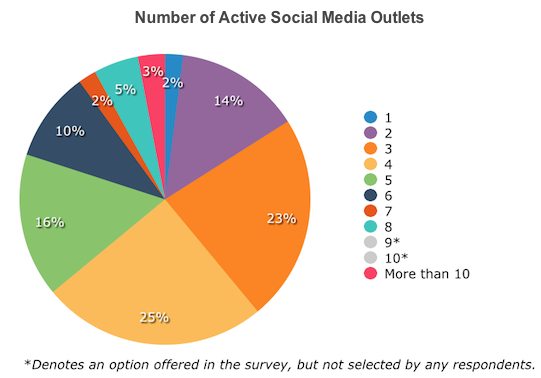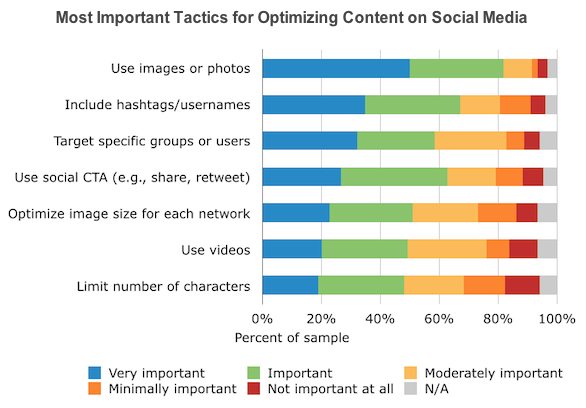
As a marketer you have many options with your digital marketing. Social media, email, search engine optimisation, content marketing, visual content marketing and now even mobile marketing. We are still learning and have questions.
One simple question I struggled with early on in my social media marketing journey was “how often should I tweet?.”
Now the burning answer to that question didn’t keep me up at night, but I decided to tweet every 15 minutes for 24 hours a day several years ago. Still do. I have been told by some that it is too frequent. Sometimes stones were thrown in my direction.
But I have a certain philosophy on Twitter. It’s not an inbox but a stream. The reality is that the life of a tweet is short lived as it bobs by in the Twitter torrent and is often never to be seen again. This social network’s design means that you have to keep tossing the content into the tweet stream, otherwise you will be missed, ignored and even forgotten.
I discovered some research by Simply Measured which revealed that tweeting every 15 minutes was very effective. How effective? The results showed that tweeting every fifteen minutes instead of thirty led to the following:
- Increased traffic by 31%
- Engagement was up by 89%
This means my current practice continues and I rest my case!
How are marketers optimizing their social media marketing?
Social media marketers have many bigger questions than the tweet frequency decision.
So the questions that whirl around marketers mind neurons are many and varied. How many social networks should I be using? How often should I post on each network? What content and tactics will be effective?
The social media, blogging and online marketing is also a content hungry beast. It is continuous, complex and is made of many moving parts. Google and social networks hate silence. They require constant feeding.
So what are some answers?
A recent study by Software advice in conjunction with Adobe has shone a light on the answers to some of those question by revealing the tactics and activities that most marketers are implementing. It did display a range of insights on how to optimize your social media marketing.
To be effective on social media you need to consider the following.
1. How many social media channels do most marketers participate on?
Social media visibility and participation achieves a variety of goals. Brand awareness, lead generation, trust, credibility and sales. The annual Edelmann Trust barometer revealed that people need to hear or see something about your company 3-5 times to believe its veracity. This means placing your content onto multiple social networks will be beneficial in achieving that visibility and build that trust.
The study displayed the following social network participation levels:
- 23% are on 3 social networks
- 25% are on 4 social media networks
- 16% are on 5
- 10% are on 6 channels
- 3% are on 11 or more
As all social networks are not equal the effectiveness of each will vary. Also it will depend on whether you are a business to consumer facing organisation (B2C) or marketing to other businesses (B2B).
My participation and focus varies according to a range of metrics and goals including helping drive traffic, sharing, conversions and sales.
2. How many social media posts should you be publishing?
Creating social media posts doesn’t mean unique content for each network but re-purposing. A blog post can tweeted, published on Facebook and Google+ and now even LinkedIn. It can also even be turned into a Powerpoint that can be uploaded to Slideshare. There are four right there!
The study revealed that 70% are posting to social networks at least once a day. That is a good start but that frequency will not make you very visible.
3. How many marketers schedule posts in advance?
A publishing schedule is now a common practice. The study showed that 65% were scheduling at least one day prior with 41% planning up to a week in advance.
4. What are the most important social media optimisation tactics?
Giving your content the best chance of being shared means using a variety of tactics to achieve optimal results with your social media marketing. These include in descending percentages as “very important” by marketers:
- Visual content marketing with images and photos – 50%
- Hashtags – 35%
- Targeting – 33%
- A call to action – 27%
- Optimizing image size – 23%
- Use videos – 20%
This displays the importance of images in marketers priorities in social network marketing optimisation. Visual content marketing has become one of the key marketing strategies to achieve marketing goals on socia networks.
5. How do you work out when to post?
This importance of this question will vary for each business. Why? Some are global and then you need to post around the clock. Others are local and then you need to make sure that they aren’t slumbering in an armchair or watching the “Voice”!
Marketers were found to use a variety of methods to determine their tactics for posting timing including:
- Trial and error
- Tools
- Industry reports
- A/B split testing
6. What goals do marketers want to achieve with social media marketing?
I was intrigued to notice that the top goal wasn’t sales (at only 3%) but gaining followers (20%) as being rated “very important” with business marketers. Social media’s biggest direct benefit is engagement for most businesses. This is the first step in the process to the final resulting sales.
So the mantra in social is “engage first and sell second“.
7. Should I automate my social media marketing?
Automation of social media was seen as an evil tactic a few years ago as it wasn’t true to the essence of social media. Marketers have come to realise that doing “social at scale” requires a platform. The study revealed that the majority (at 57%) are using software to scale their efforts.
8. How do marketers feel about the difficulty of optimizing social media?
When marketers were asked about the ranking of the overall difficulty the majority seem to be struggling somewhat with 55% ranking it as at least somewhat difficult or “extremely difficult”. This isn’t surprising as the large range and differences between social networks is placing heavy demands on optimizing and even participating.








No comments:
Post a Comment